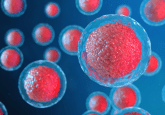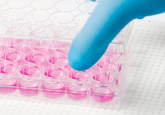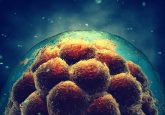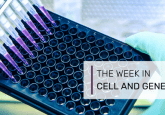A step closer to understanding Crohn’s disease

Researchers have utilized intestinal epithelial organoids to investigate how DNA modifications in gut cells may influence the risk of Crohn’s disease.
In a recent study, researchers at the University of Cambridge (CUH; UK) leveraged patient-derived intestinal stem cells to grow intestinal epithelial organoids, providing a better understanding of Crohn’s disease (CD). The team performed genome-wide molecular profiling and functional analysis of these organoids, aiming to uncover potential mechanisms involved in the pathogenesis of CD. By using organoids to model CD instead of mice models, they hope to gain more accurate insights into the cause of CD and potential advancements in treatment options for patients.
CD, a form of inflammatory bowel disease, is a chronic condition that affects approximately one in 350 people in the UK. Individuals with CD experience persistent inflammation of the digestive tract, which can significantly impact quality of life with symptoms such as diarrhea, fatigue and stomach aches. Despite various treatment options that target mucosal inflammation to reduce or control symptoms, there is no cure for CD. Recurrent mucosal inflammation tends to reappear in the same anatomical region, but the underlying mechanisms that lead to these recurrences are unclear. In some cases, due to recurring inflammation, surgical removal of part of the digestive system is an alternative to medicinal treatment.
The exact cause of the condition remains unknown, but researchers have identified multiple factors that may increase the risk of CD such as genetic risk factors. It is estimated that 10% of CD cases are inherited, resulting from variations in DNA. However, identifying these genetic factors with certainty remains challenging.
Finding a highly accurate method to study CD beyond mice models has been challenging, hindering researchers from fully understanding the intestinal epithelial cell (IEC)-specific mechanisms. Tackling this challenge, Matthias Zilbauer and his colleagues grew over 300 intestinal epithelial organoids from donated mucosal biopsies from 168 patients with CD, ulcerative colitis, or no irritable bowel syndrome (as a healthy control).

Harvesting a safer PSC culture to reduce tumor formation
Researchers have identified a novel cell surface marker that might decrease the risk of tumor formation after stem-cell transplantation.
The team investigated the epigenetic mechanisms that could play a role in the pathogenesis of CD. DNA methylation (DNAm) has been suggested as a key player in the origin and development of CD. Previous research has provided evidence for the crucial role of DNAm in regulating IEC function in vivo and in intestinal organoids, linking it to inflammatory bowel disease.
During their investigation of DNAm patterns, the team used genome-wide molecular profiling techniques including bulk and single-cell RNA sequencing in combination with gene editing and functional screens to identify specific epigenetic pattens the cellular pathways affected by them in the organoids. Alongside the epigenetic patterns identified, the team found elevated major histocompatibility complex (MHC)-1 activity
“This is the first time where anyone has been able to show that stable epigenetic changes can explain what is wrong in the gut epithelium in patients with Crohn’s disease,” said Zilbauer.
Interestingly, the epigenetic changes varied among the different organoids, with significant correlations between the epigenetic changes and how severe the disease was in relation to the donor. This discovery highlights why conventional treatment options may not yield the desired outcomes for patients. Variations in cell functions can result in reduced responsiveness or non-responsiveness to the available medications.
The researchers hope that further investigations into these findings, particularly IEC-specific mechanisms, will enhance understanding of CD and lead to the development of novel treatments targeting the underlying issues of CD rather than just the symptoms. This could enable personalized treatments for individual patients.
Robert Heuschkel, the co-author of the study, expressed the potential impact of this study, stating, “In [the] future, [imagine] taking cells from a particular patient, growing their organoid, testing different drugs on the organoid and saying, ‘OK, this is the drug that works for this person’.”





